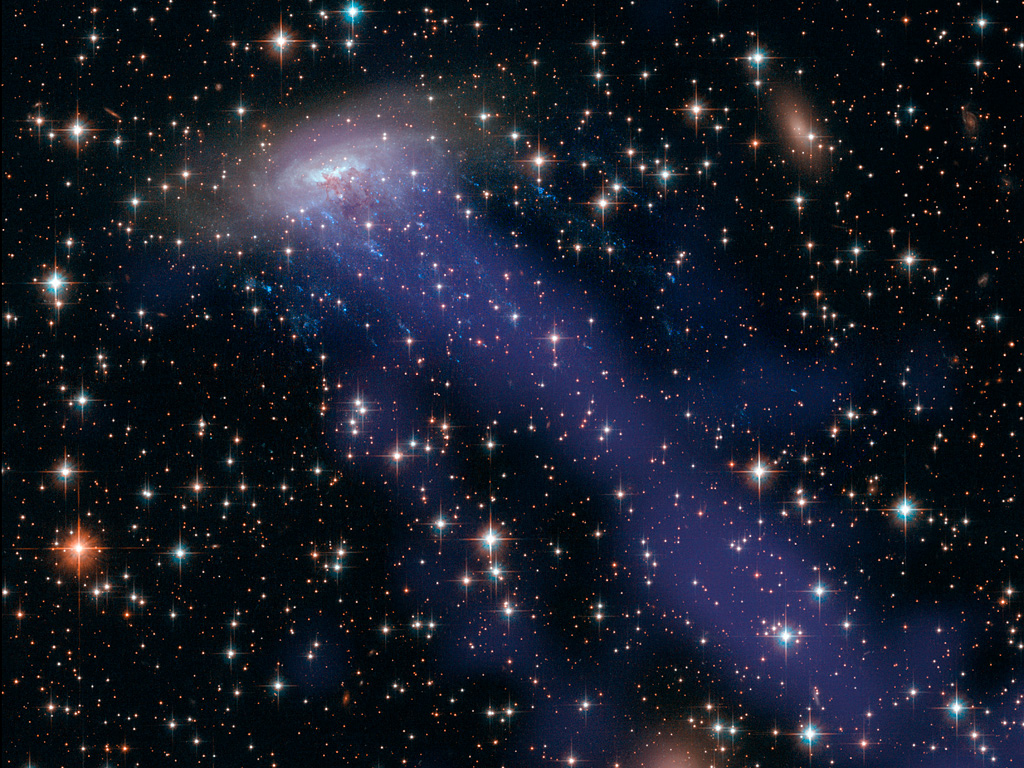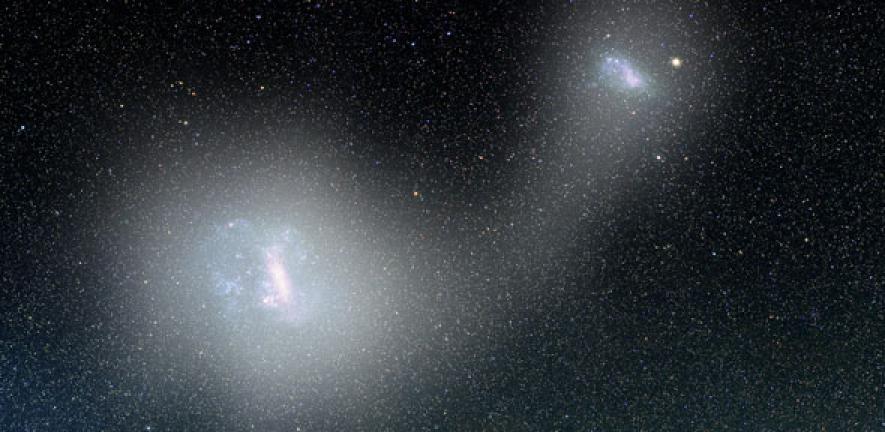VictorBorun wrote: ↑Sun Apr 17, 2022 1:46 pm
Chris Peterson wrote: ↑Fri Apr 15, 2022 6:16 pm
Ann wrote: ↑Fri Apr 15, 2022 6:03 pm
If you ask me, there isn't a lot of intergalactic gas in the Local Group.
There is a lot... but the density is extremely low. But the volume of intergalactic space is also immensely greater than the volume of all the galaxies that are in that space. I believe that something like 95% of the hydrogen in the Universe exists outside of stars and galaxies.
We are speaking here of heating/ionizing red alpha Hydrogen inside a galaxy. What is really a lot for a head wind must compare with UV from young stellar cluster N11.
It's not a one-to-one mapping of a headwind Hydrogen atom or proton to a UV photon; a headwind proton at 380 km/s can ionize many atoms inside a galaxy.
An Hα photon has a wavelength of 656.46 nm and an energy of 1.889 eV
But to generate it, an electron must go down from an n=3 to an n=2 level, and so that electron must first go up from an n=1 to an n=3 level; so an exciting quantum must be 12.1 eV.
That's a lot; a photon with that energy is 102 nm far UV born mostly at 140 thousand Kelvins. If a blue giant is just 40 thousand Kelvins, such photons are rare.
As for a headwind proton, at 380 km/s, it has 750 eV of kinetic energy and can excite 60 Hydrogen atoms inside a galaxy.
Take a look at the CFHT image of NGC 4569 (M90) and its satellite galaxy again:
I'm not going to annotate this image, but as you can see, M90 has a satellite galaxy (to its upper right). If this galaxy, IC 3538, is indeed a satellite of M90, then it will be in orbit around M90. But the red light from Hα, ionized hydrogen, is
not centered on the companion galaxy. Most of the ionized hydrogen is flowing away from a part of M90 that is located quite far from IC 3538.
I can't guarantee that IC 3538 is
really a satellite galaxy of M90 and thus in orbit around the Messier galaxy. IC 3538
could be just a line of sight galaxy that is not orbiting M90.
But there is no doubt that M32 and NGC 205 are satellite galaxies of the Andromeda galaxy, and that they are orbiting the Andromeda galaxy. Therefore, if there is a gaseous medium that would cause ram on one side of around M32 and NGC 205 as they orbit Andromeda, we ought to see red gas around these galaxies. But we don't.
Ionized hydrogen around Andromeda galaxy and satellites.
Image: Rogelio Bernal Andreo.
You may object that there is very little gas in M32 and in NGC 205, so there would not really be any gas in these galaxies to be ionized in the first place. That is true of M32, but NGC 205 does in fact contain some gas. Check out
this Hubble picture of the center of NGC 205. You can see the young blue stars near its center, and you can (just barely) make out a dark cloud of gas and dust near the center of the picture.
As for the Large Magellanic Cloud, there is in fact a bridge of gas and stars between the Large Magellanic Cloud and the Small Magellanic Cloud:
There appears to be a stream of gas between the Milky Way and the LMC too, but the way I understand it, it is less pronounced than the Magellanic Bridge between the LMC and the SMC.
Read the caption that comes with the image
here. My point is that there is normally not a lot of ram pressure and not a lot of ionized hydrogen clouds around smallish galaxies orbiting larger ones.
Ann
 N11: Star Clouds of the LMC
N11: Star Clouds of the LMC





